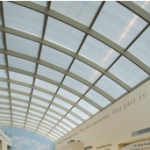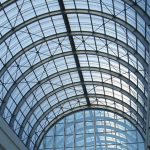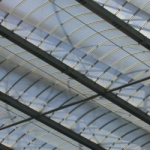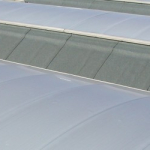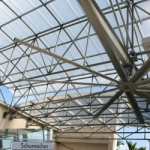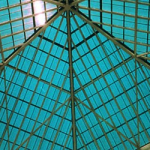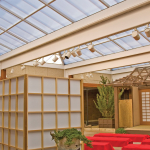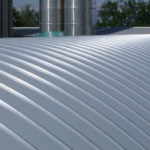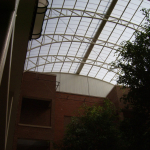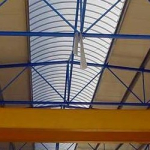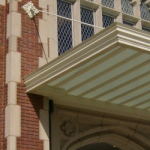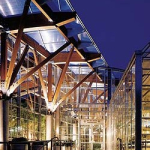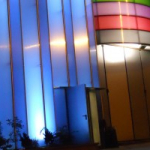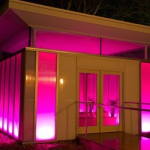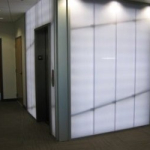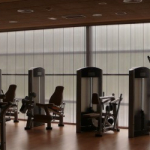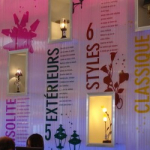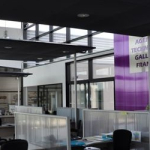Daylighting Opportunities
There are many reasons for the renewed interest in daylighting, the high cost of fossil fuels and the realization that sources of electricity have a finite life; perhaps even more important though are the less tangible aspects of daylighting which relate more to the human spirit, and the quality of life….From office buildings to schools, manufacturing plants to hotels, daylighting plays an important role in a building’s design. Daylighting not only supports our efforts with sustainability, helps conserve energy resources but improves our overall productivity and well-being. The use of polycarbonate to enhance daylighting in architectural design is playing an ever-growing part in this movement to bring daylight into our lives.
Horizontal Daylighting
Skylighting, when designed properly, will optimize the sun’s trajectory and maximize the amount of light coming into a building. The optimal area of skylights (usually quantified as “effective aperture”) varies according to climate, latitude, and the characteristics of the skylight, but is usually 4-8% of floor area. Today’s skylight fabricators are taking full advantage of the wide variety of Gallina PoliCarb® and arcoPlus® products and designing them into their skylight systems. Products ranging in thickness from 10mm -40mm extruded in colors that both enhance appearance and improve thermal efficiency, combined with our unique IR® coextrusion, make the decision to incorporate polycarbonate into a skylight system an easy one.
Vertical Daylighting
Another important element in creating daylighting is the use of clerestory windows. These are high, vertically-placed windows. They can be used to increase direct solar gain when oriented towards the equator. When facing toward the sun, clerestories and other windows may admit unacceptable glare. In the case of a passive solar house, clerestories may provide a direct light path to polar-side (north in the northern hemisphere; south in the southern hemisphere) rooms that otherwise would not be illuminated. Alternatively, clerestories can be used to admit diffuse daylight (from the north in the northern hemisphere) that evenly illuminates a space such as a classroom or office. Often, clerestory windows will shine onto interior wall surfaces painted white or another light color. These walls are placed so as to reflect indirect light to interior areas where it is needed. This method has the advantage of reducing the directionality of light to make it softer and more diffuse, reducing shadows. With these needs in mind Gallina has designed a series of panels and systems for vertical window and clerestory applications. Depending on climate, geography, or application our arcoPlus® line includes standing seam modular panel systems from 8mm -20mm thicknesses that will offer the architect/designer a wide variety of choices to meet the needs of their project.
Applications
There are so many options available when considering where to incorporate polycarbonate into your design.
Examples of Awnings
Examples of Backlighting
Examples of Interiors
Solar Control
The control of the temperature and the management of heat are essential elements in maintaining a desired level of comfort within buildings. They are also critical elements for controlling cost and maximizing energy savings. Gallina’s engineers work with many of the world’s cutting edge companies in developing solutions for solar control. Click on these links for information on IR®; AR®; Caleido®.





